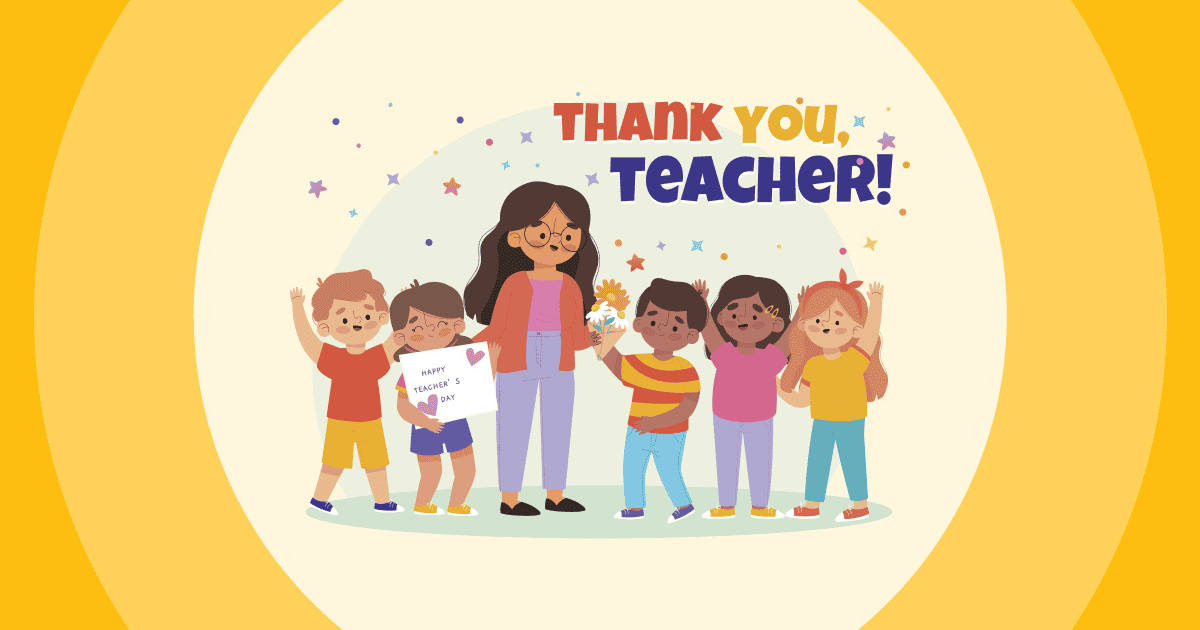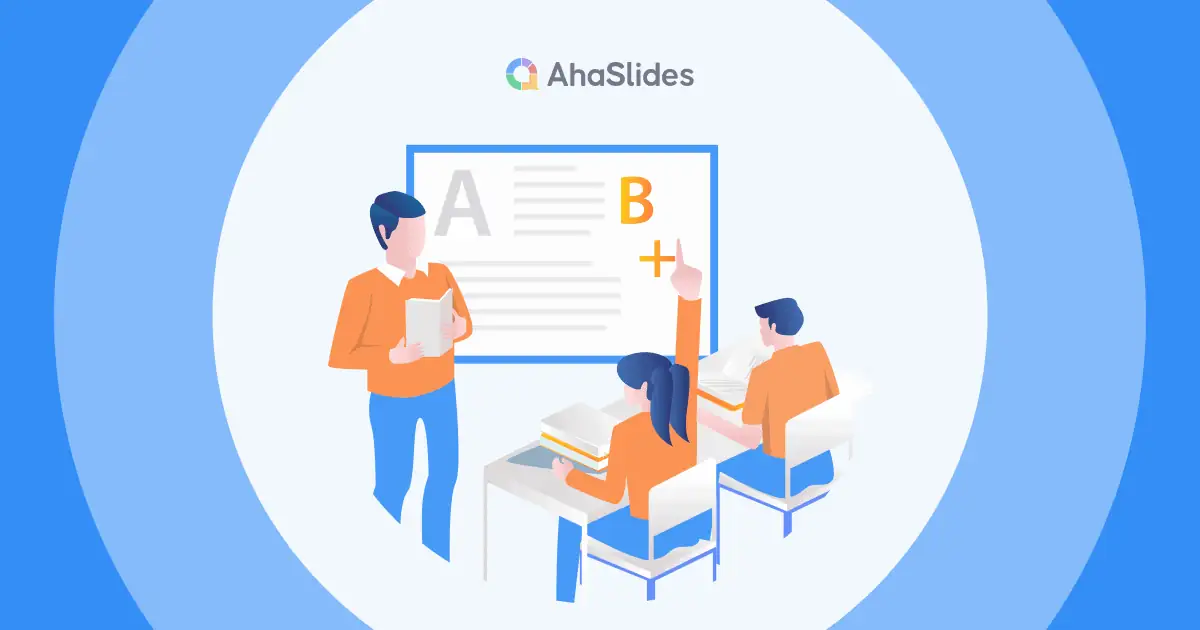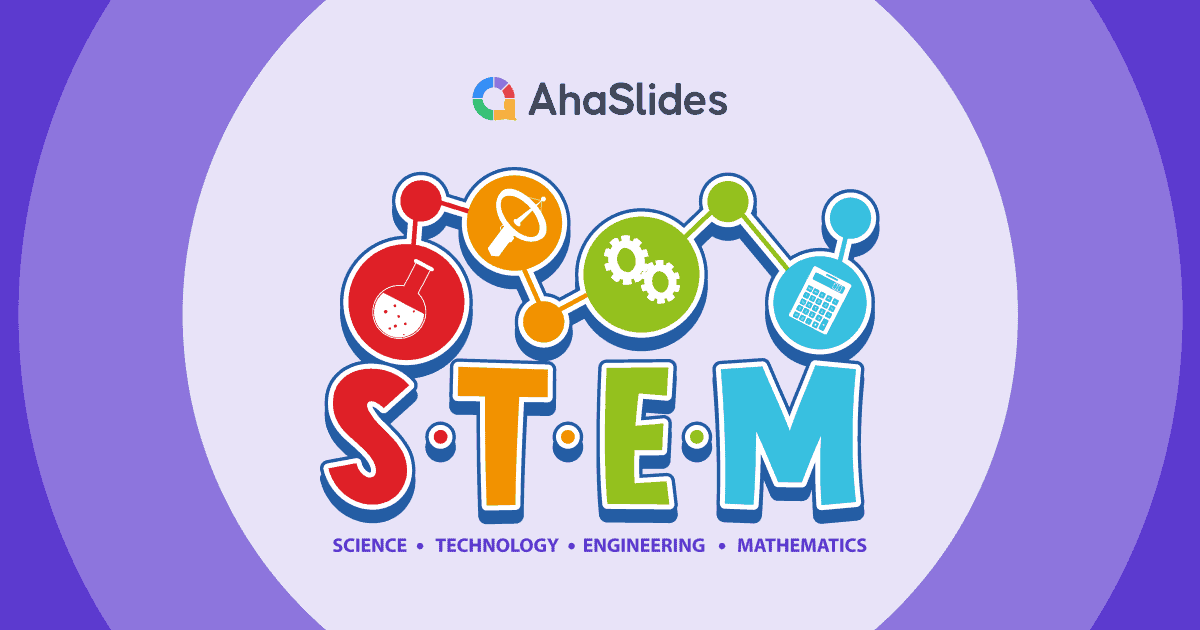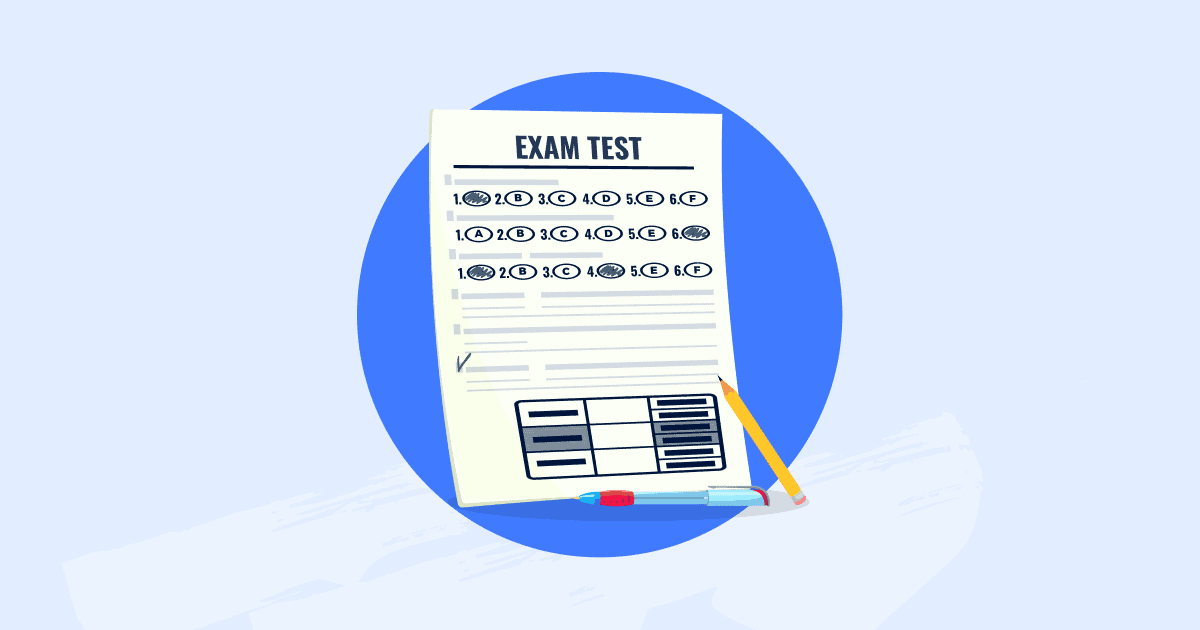“如果你想走得快,就一個人走; 如果你想走得更遠,就一起走。”
與學習類似,個人需要個人思考和團隊合作才能成功。 這就是為什麼 思考結對分享活動 可以是一個有用的工具。
本文全面解釋了「思考配對分享策略」的含義,並提出了一些有用的思考配對分享活動供實踐,以及如何進行和參與這些活動的指南。
目錄
什麼是思維結對分享活動?
的概念 思考結對共享 (TPS) 來於 一種協作學習策略,學生共同解決問題或回答有關指定閱讀的問題。 1982 年,Frank Lyman 將 TPS 表示為一種主動學習技術,鼓勵學習者參與其中,即使他們對某個主題沒有什麼內在興趣(Lyman,1982;Marzano & Pickering,2005)。
下面是它的工作原理:
- 認為:向個人提出一個要考慮的問題、問題或主題。 鼓勵他們獨立思考並產生自己的想法或解決方案。
- 對:經過一段時間的個人反思後,參與者將與一名搭檔配對。 這個夥伴可以是同學、同事或隊友。 他們分享自己的想法、想法或解決方案。 這一步驟可以交換觀點並提供相互學習的機會。
- 分享到:最後,兩人與更大的小組分享他們的綜合想法或解決方案。 這一步驟鼓勵每個人積極參與和參與,並為進一步討論和完善想法提供了平台。
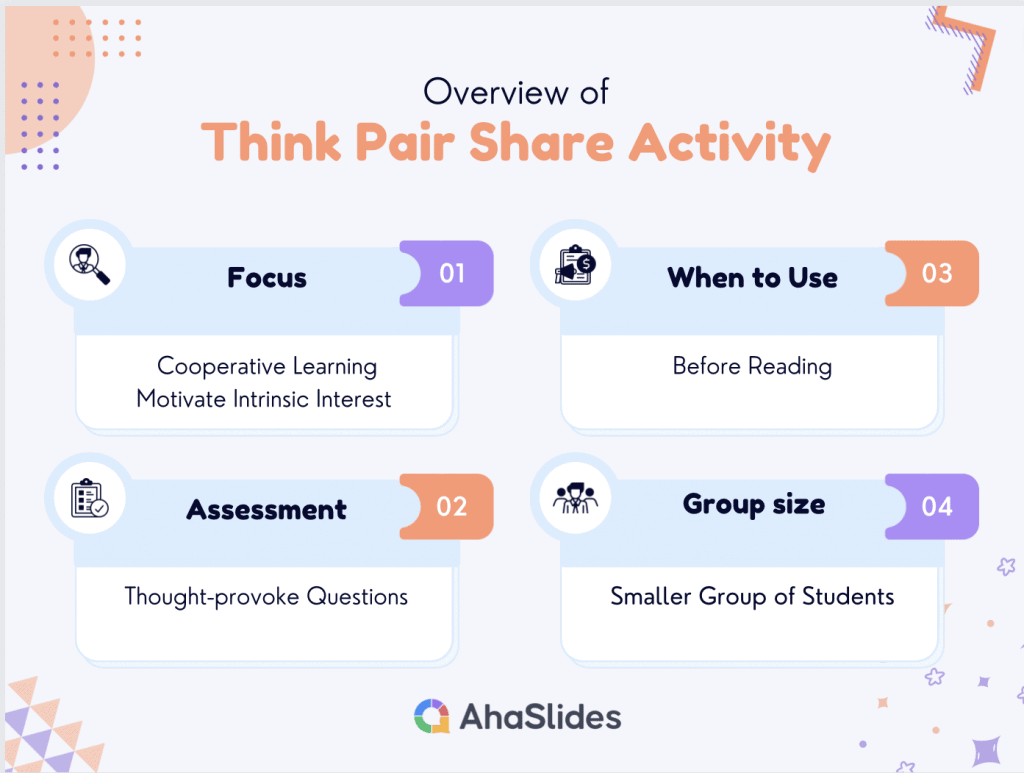
思考結對分享活動有哪些好處?
「想一想,配對分享」活動與其他課堂活動一樣重要。它鼓勵學生參與有意義的討論,分享想法和觀點,並從彼此的角度學習。這項活動不僅有助於培養批判性思考和溝通能力,還能促進學生之間的協作和團隊合作。
此外,思考結對分享活動非常適合併非每個學生都願意在全班面前發言的情況。 Think Pair Share 活動為學生提供了一個更小、更不那麼令人生畏的表達自己的平台。
此外,在與合作夥伴的討論中,學生可能會遇到不同的觀點。 這為他們提供了一個學習如何以尊重的方式提出不同意見、進行談判並找到共同點的機會——這是重要的生活技能。

提高參與度的技巧
思考結對分享活動的 5 個示例
以下是在課堂學習中應用思維結對分享活動的一些創新方法:
#1. 畫廊步行
這是一個很棒的「想一想,結對分享」活動,可以讓學生動手,並互相交流作品。讓學生創作海報、繪畫或其他作品,表達對某個概念的理解。然後,把海報放在教室周圍的展覽廳。學生們在展場走動,並與其他學生配對討論每張海報。
#2. 快速問題
另一項值得嘗試的優秀思維配對分享活動是快速提問。 這是一種讓學生快速、創造性思考的有趣方式。 向全班提出一系列問題,並讓學生兩人一組討論他們的答案。 然後學生與全班分享他們的答案。 這是讓每個人參與並引發大量討論的好方法。
🌟您可能還喜歡: 37 個謎語問答遊戲,帶答案,測試你的智力
#3。 字典搜尋
Dictionary Hunt 對學生來說是一項令人難以置信的思維結對分享活動,可以幫助他們學習新的詞彙。 給每位學生一份詞彙表,並讓他們與搭檔配對。 然後學生必須在字典中找到單字的定義。 一旦他們找到了定義,他們就必須與合作夥伴分享。 這是讓學生一起學習新詞彙的好方法。
對於此活動,您可以使用 AhaSlides 的 想法板,這對於學生成對提交他們的想法很有用,然後可以投票選出他們最喜歡的想法。
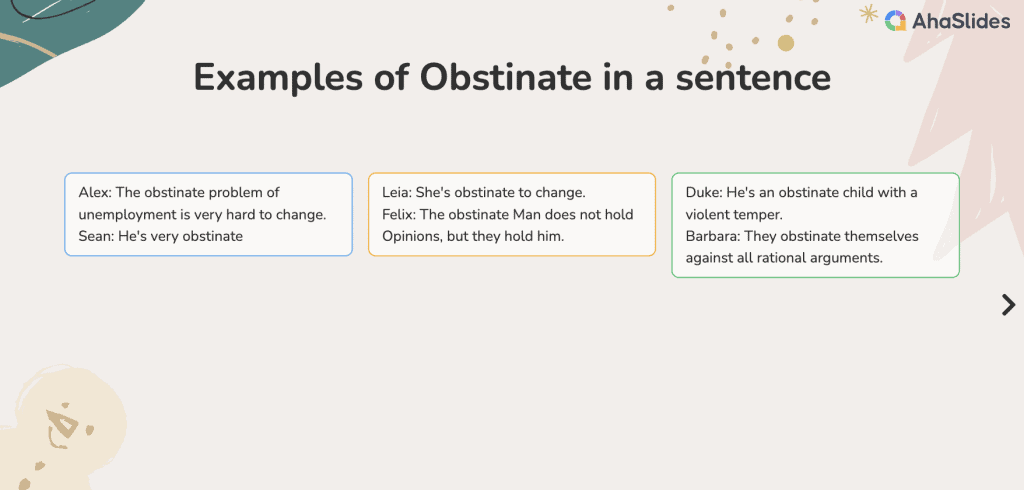
#4。 思考、配對、分享、繪畫
這是一項廣泛的 Think Pair Share 活動,添加了視覺組件。 在學生有機會與搭檔討論他們的想法後,他們必須畫一張圖片或圖表來表達他們的想法。 這有助於學生鞏固對材料的理解並更有效地傳達他們的想法。
#5。 思考、配對、分享、辯論
在「思考配對分享」活動中,加入辯論環節似乎對學生的學習大有裨益。在學生與同儕討論各自的想法後,他們需要就一個有爭議的問題進行辯論。這有助於學生培養批判性思考能力,並學習如何捍衛自己的想法。
🌟您可能還喜歡: 如何舉行學生辯論:有意義的課堂討論的 6 個步驟
開展思想配對分享活動的 5 個技巧
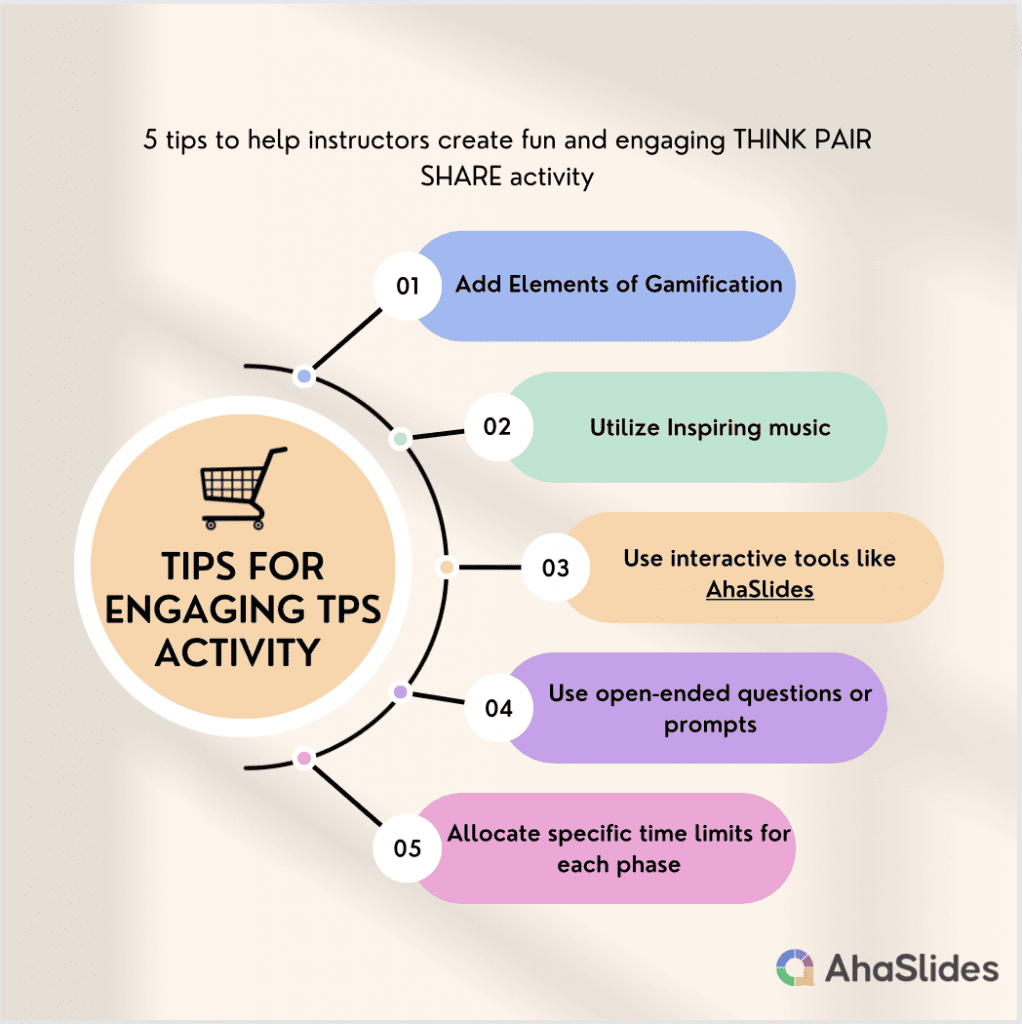
- 提示#1。 添加遊戲化元素:把活動變成遊戲。 使用遊戲板、卡片或數字平台。 學生或參與者兩人一組完成遊戲,回答問題或解決與主題相關的挑戰。
讓學生參與一輪課程問答遊戲
嘗試 AhaSlides 互動功能並從我們的模板庫中獲取免費的測驗範本!沒有免費隱藏💗
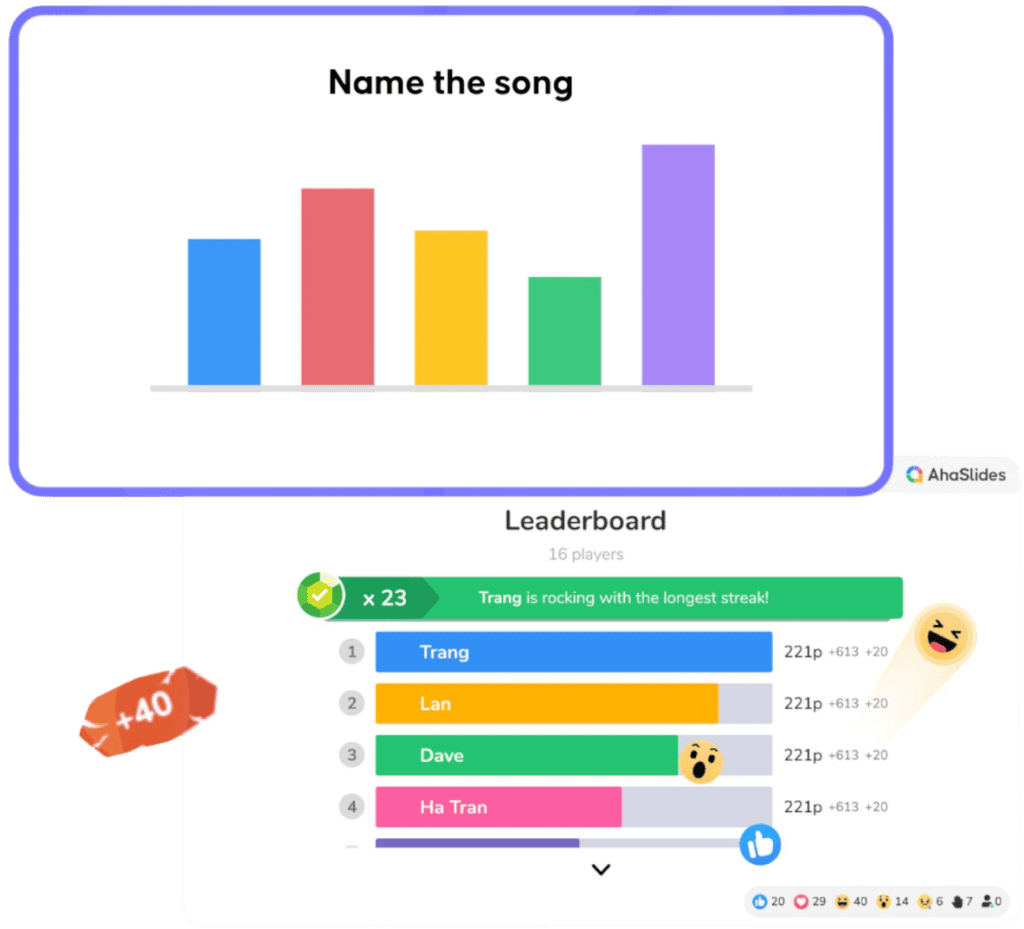
- 提示#2。 使用鼓舞人心的音樂。 音樂是使學習過程更加富有成效的關鍵部分。 例如,使用歡快、充滿活力的音樂進行頭腦風暴會議,使用反思、平靜的音樂進行內省討論。
- 提示#3。 技術增強:利用教育應用程序或交互式工具,例如 啊哈幻燈片 促進 Think Pair Share 活動。 參與者可以使用平板電腦或智能手機進行數字討論或兩人一組完成互動任務。
- 提示#4。 選擇發人深省的問題或提示:使用開放式問題或提示來激發批判性思維和討論。 提出與當前主題或課程相關的問題。
- 提示#5。 設定明確的時間限制:為每個階段(思考、配對、分享)分配具體的時間限制。使用計時器或視覺提示來確保參與者保持在正軌上。 AhaSlides 提供計時器設置,可讓您快速設定時間限制並有效控制活動。
常見問題(FAQ)
什麼是思考-配對-分享策略?
思考配對分享是一種流行的協作學習技術,要求學生共同解決問題或回答與給定閱讀或主題相關的問題。
思考配對分享的例子是什麼?
例如,老師可能會問這樣的問題:「我們學校有哪些方法可以減少浪費?」學生可以遵循「思考、配對、分享」的原則來回答這個問題。分享活動是基礎,但老師可以加入一些遊戲,讓學習更有趣、更引人入勝。
如何進行思維配對分享活動?
以下是如何進行思考配對分享活動的步驟:
1. 選擇一個適合學生程度的問題。例如,老師首先向全班提出一個與氣候變遷相關的發人深省的問題,例如“氣候變遷的主要原因是什麼?”
2. 給學生幾分鐘時間單獨思考問題。 每個學生都有一分鐘的時間安靜地思考問題,並在筆記本上寫下他們最初的想法或想法。
3. 「思考」階段結束後,老師指導學生與坐在附近的同伴結對討論他們的想法。
4. 幾分鐘後,請學生與全班分享他們的想法。 在此階段,每一對分享他們與全班討論中的一兩個關鍵見解或想法。 這可以由每對志願者或隨機選擇來完成。
什麼是學習的思維配對共享評估?
思考-配對-分享可以用作學習評估。透過傾聽學生的討論,教師可以了解他們對材料的理解程度。教師也可以使用思考-配對-分享來評估學生的口語和聽力技能。



